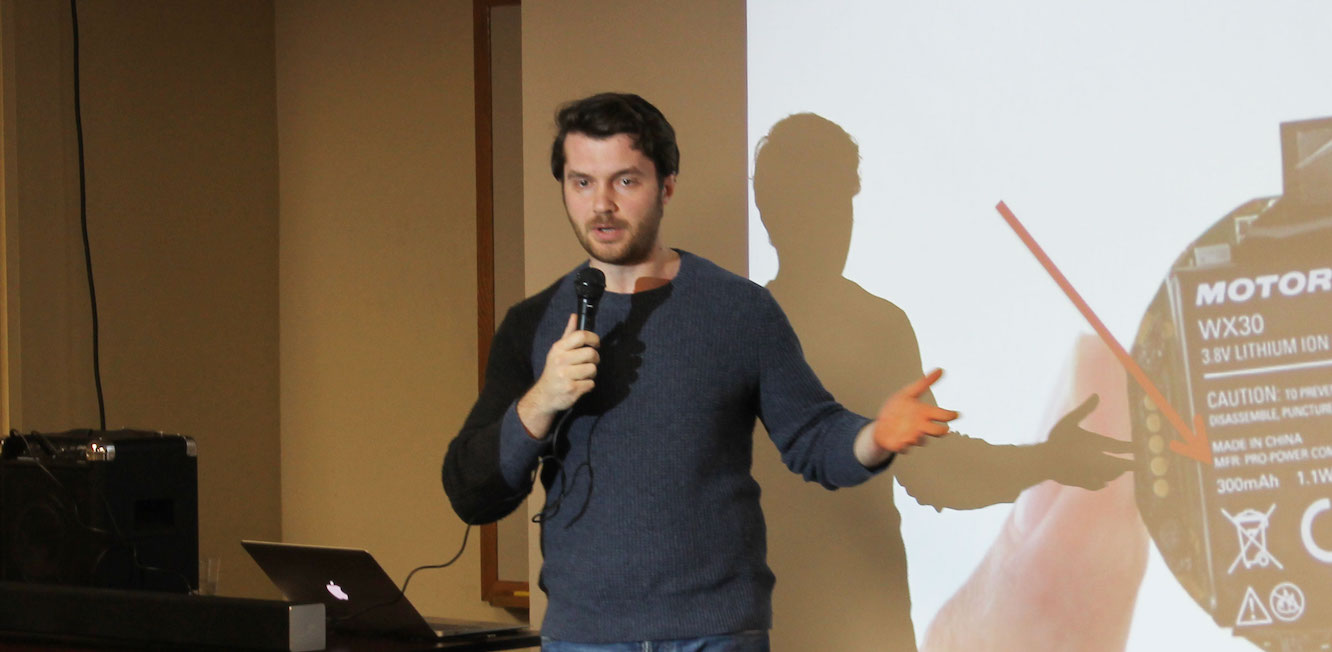MSIT Alumnus Emirhan Poyraz Presents Seminar on Smartwatch Battery Life
The following is content of the talk given by Emirhan Poyraz, MSIT alumnus from the class of 2009 and current graduate student pursuing his PhD in the EECS department at Northwestern.
Why does my smartwatch battery die so fast?
The smartwatch industry is growing rapidly, but little is known about the usage and power consumption characteristics of these battery driven devices. In my talk I will present a study we made on real end-user data releasing a logger application that monitors users while they are using their watches. We (with my advisor Prof. Gokhan Memik) collect traces of real smartwatch user activities from 32 users (4 brands, 7 different models) with totally 70 days of continuous use. We use the traces to characterize usage and power consumption as well as identifying operational bottlenecks. And we try to answer the question "Why does my smartwatch battery die so fast?" with 9 main findings.
Advances in computing and communication technology have recently converged in the form of mobile smartwatches. Mobile smartwatches, or smartwatches for short, are mobile watches integrated with computer-like hardware and software, e.g. microprocessor, storage devices, network capabilities, and a full-blown operating system. The combination of portable computation and communication not only enables general-purpose applications on a watch, but also enables a new class of mobile applications such as getting notifications of all actions of the connected smartphone and controlling them from the watch without interacting with phone. This includes pushing emails, using location-aware social network services or answering calls, etc. These features make these wearable devices, smartwatches, more convenient in many conditions and make its users to be less interactive with their phones while still being notified. Similar to mobile smartphones, which were adopted fast and continues its growth, the market for smartwatches is expected to grow significantly in coming years.
Looking forward, while expecting a significant growth in the smartwatch market, we can also expect a constant demand from the market for more functionality. Increasing functionality requires more computation, which typically requires higher energy consumption levels. However, the form factor of a smartwatch limits battery size, and, ultimately, the amount of stored energy. Smartwatches must be optimized for energy efficiency in order to provide more functionality while maintaining a reasonable battery life.
The first step for any optimization is to identify and characterize representative workloads. Workload characterization is critical for identifying components and operational bottlenecks that can be targeted for optimization, as well as finding trends or patterns in the workload to develop optimizations.
In the case of a smartwatch, we consider workloads are the usage patterns of the end users; therefore we also use the term “end user” as workload. This is intuitive; the activity of a smartwatch is either driven directly by user interaction, or indirectly via the user’s smartphone’s network or environment. Specifically we develop a logger application with the name of Android Wear Monitor Pro for Android Wear smartwatches that logs user activity and sends traces back to our servers through their connected phones. We release the logger into the Market to collect traces of real users on real smartwatch devices in real environments. We then demonstrate how these logs can be used to characterize power consumption and usage behavior. We also present regression-based power estimation models for each user, which use high-level system measurements to estimate power consumption. We present a comprehensive analysis of real smartwatch usage of 32 users with their own smartwatches. The main goal of our study is to observe the high-level workload characteristics of real smartwatch users, and understand the implications of these characteristics to discover the operational bottlenecks that can be targeted on optimizing these devices.
When we analyze the traces of our 32 real users, we find that the breakdown of power consumption among hardware components varies significantly based upon the workload. These findings also show the variances of workloads and the need for understanding real workloads in real environments. Averaged across our users, our results also indicate that the CPU and the screen are the two most power-consuming components.
Overall, we present 9 main findings as follows:
Power Modeling
1. We develop linear-regression-based power estimation models, which leverage easily accessible measurements to accurately predict the system-wide power consumption of various smartwatch architectures.
General Observations
2. Users charge their batteries frequently (typically more than once a day) and rarely use it more than 15 straight hours. Also they use their watches until the remaining battery level is low (less than 30%).
Improving Energy Efficiency
3. There is significant variation in the usage behavior. This results in a high variation on power consumption across users.
4. Active state consumes 53.2% of the total system power on average across all brands; even though it only accounts for 11% of the usage time. Of the hardware components, the screen and the CPU consume the most power across all brands; 38.5% and 32.6% of the active power consumption on average, respectively.
5. Across all users, the watch is in the Idle state 89% of the time and this accounts for 46.8% of the total system power.
6. Most users do not switch between multiple screen brightness levels, nor do they use automatic brightness adjustment.
7. The CPU utilization is mostly either at 80-100%, or under 20%.
Networking
8. Bluetooth and WiFi (for the watches with Android Lollipop) are the two possible technologies to connect to phone or to environment. Most users do not change the default inactive WiFi state and do not use it. Bluetooth is the main and most used communication method.
Applications
9. CPU utilization of some applications developed by third parties is significantly higher than others. Of the broad perspective applications that use screen in the name of “watchface applications” use CPU source more than others.


